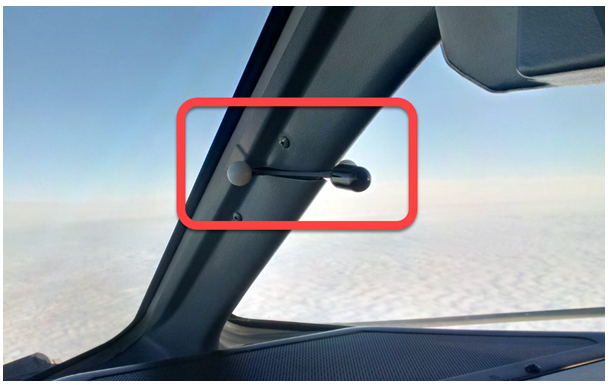by Michael Schuster, Chief Instructor, Aviation Solutions
Have you ever had a student who can’t land? Take off straight? Or even taxi properly? There is a human factors element in aircraft design called the Design Eye Reference Point (DERP) which is frequently overlooked by flight instructors and general aviation pilots, which can have a remarkable impact on how well a pilot performs.
Let me start by saying that I recently rediscovered a handout on DERP that I received from the late Mike Spence, a TC inspector whom I had the privilege of doing both my Class 4 and Class 2 initial flight tests with. Some of the information in this article is drawn from his original work in 2003, for which I give him credit and thanks.
First, it’s important to know that every aircraft has a DERP built in by aircraft engineers. In transport category aircraft, it’s readily available information… the pilot adjusts his or her seat up/down and fore/aft until the alignment “balls” match. Ideally, the aircraft has adjustable rudder pedals that are now moved into position so that the pilot has full range of control.
When sitting in the correct DERP, the pilot has the best view of both the instruments and the outside world. According to the SAE Dictionary of Aerospace Engineering, the Design Eye Position is defined as “a point fixed in relation to the aircraft structure at which the midpoint of the pilot’s eyes should be located.” The Aeronautical Information Manual (Airmanship 4.12) goes on to highlight that the pilot should also be comfortable.
In light aircraft, there is indeed a DERP, but because of the small size of the aircraft, there are generally no clear mechanical indicators to align the pilot’s eyes. However, a simple method can be used. Keep in mind that a good portion of the engine cowling should be visible to facilitate manoeuvres: approximately a 15-degree angle of view over the nose will accomplish this.Footnote 1
Pilots should adjust their seat to where they think they should be sitting (and yes, this may involve cushions and phone books—there is still a purpose for printed yellow pages). Have someone else walk approximately 30 ft in front of the airplane. The pilot should be able to see the feet of that person. If not, the pilot needs to raise their seating position. If they happen to be sitting quite high, lower the pilot’s seat, if possible.
I have done this many times, nearly always with great success in student performance. Flight instructors should consider investigating where a student’s eyes sit at the beginning of any training in a new airplane type in order to give the student the best chance of success. Not only does it give the student the proper visibility to assist with flight manoeuvres and taxiing, but by having the instructor’s and student’s eyes at the same height (the correct DERP), instruction will also be more effective.
Finally, if a reasonable eye position cannot be achieved, it is highly recommended that another aircraft be selected more appropriate to the physical size of the pilot. Additionally, when determining the optimal position, pilots must be careful to ensure that all controls can be easily moved through their full range, no large head movements are necessary to scan outside or the instrument panel, and all warning lights remain visible.
A version of this article originally appeared on Aviation Solutions website. Mike Schuster is an experienced Class 1 flight instructor who has taught at all levels, from ab initio to airline. He is the chief instructor at Aviation Solutions, which is an authorized Flight Instructor Refresher Course provider for rating renewal.
